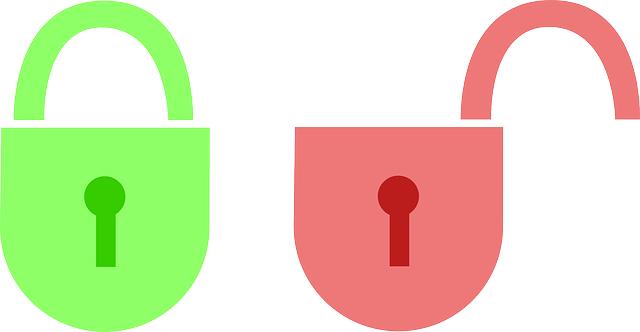Bridging Divides: Tackling Inequality in Modern Pakistan
In a country woven from a rich tapestry of cultures, languages, and traditions, Pakistan stands at a crossroads, grappling with the stark realities of inequality that permeate its social fabric. From the bustling markets of Karachi to the serene valleys of Swat, the divide between affluence and poverty is starkly visible, echoing narratives of opportunity and deprivation. As the nation navigates the challenges of rapid urbanization and economic shifts, the pressing question arises: how can Pakistan bridge these chasms and cultivate a more equitable society?
This article delves into the multifaceted nature of inequality in modern Pakistan, exploring its roots in historical injustices, economic disparities, and social stratifications. By examining grassroots initiatives, policy reforms, and the resilience of communities striving for change, we will uncover the pathways toward bridging divides. The journey may be complex, but within it lies the potential for a more unified and just future. Join us as we explore the challenges and opportunities that lie ahead in the pursuit of equality—a goal that resonates deeply in the hearts of many across this vibrant nation.
Understanding Socioeconomic Disparities in Pakistan’s Urban and Rural Landscapes
The divide between urban and rural areas in Pakistan starkly illuminates the socioeconomic disparities that shape the lives of millions. Urban centers, often laden with opportunities, showcase towering skyscrapers and modern infrastructure, while the rural landscapes tell a different story. Here, poverty often prevails, with limited access to basic amenities such as healthcare, education, and clean water. Factors contributing to this divide include:
- Job Opportunities: Urban areas attract diverse employment prospects, whereas rural communities rely heavily on agriculture, leaving many without stable livelihoods.
- Access to Education: Schools in urban centers are generally better equipped and staffed compared to their rural counterparts.
- Healthcare Services: Urban populations enjoy a range of healthcare facilities, while rural residents often travel long distances for medical assistance.
Moreover, government policies and investment often favor urban development, exacerbating these inequalities. The historical neglect of rural areas reflects in the lack of infrastructure, which limits economic growth. To understand the breadth of this issue, consider the following table that contrasts key socioeconomic indicators in urban and rural settings:
| Indicator | Urban Areas | Rural Areas |
|---|---|---|
| Literacy Rate | 75% | 55% |
| Access to Clean Water | 90% | 60% |
| Unemployment Rate | 8% | 35% |

Innovative Education Models to Empower Underprivileged Communities
In the quest to uplift underprivileged communities in Pakistan, innovative education models are emerging as key vehicles for change. One prominent approach is the integration of community-based learning, where educational programs are tailored to local contexts and cultural specifics. This model fosters a sense of ownership among participants, ensuring that the curriculum reflects their unique needs and aspirations. Additionally, mobile learning units have begun to make a difference, using technology to deliver lessons in remote areas. By leveraging smartphones and tablets, educators can reach students who might otherwise be cut off from formal schooling, thus bridging geographical divides.
Another inspiring development is the rise of mentorship networks, where professionals volunteer to guide students from underserved backgrounds. These initiatives not only provide academic support but also offer real-world insights into various career paths. Partnering with local businesses, these mentorship programs often lead to internships and job placements, ensuring that education translates into economic opportunity. Furthermore, collaborative learning spaces, such as community libraries and co-working hubs, are being established to encourage peer learning and resource sharing. These spaces serve as vital touchpoints for collaboration, igniting a culture of innovation and resilience among the youth.

Fostering Inclusive Economic Growth Through Strategic Public-Private Partnerships
In modern Pakistan, creating a sustainable economic environment necessitates collaboration between the public sector and private enterprises. Strategic partnerships can drive inclusive growth by pooling resources, sharing expertise, and fostering innovation. Key areas where these collaborations can flourish include:
- Infrastructure Development: Joint projects can improve transportation, energy, and technology access in underserved areas.
- Education and Skills Training: Public and private initiatives can enhance vocational training programs tailored to local job markets.
- Access to Finance: Collaborative efforts can extend microfinance solutions, empowering small businesses and entrepreneurs.
To monitor the effectiveness of these partnerships, it’s crucial to implement measurable outcomes and keep stakeholders accountable. A model highlighting the correlation between partnership strategies and economic indicators can provide clear insights. Below is a simplified representation:
| Partnership Focus | Measured Outcome | Impact Indicator |
|---|---|---|
| Infrastructure | Increased connectivity | Time taken to travel between major cities |
| Education | Graduation rate improvement | Percentage of students completing vocational training |
| Access to Finance | Growth in small businesses | Number of new businesses registered |

Engaging Civil Society: A Catalyst for Lasting Change and Unity
In a country as diverse as Pakistan, civil society serves as the cornerstone for bridging divides and fostering unity. By mobilizing various community groups, nonprofits, and grassroots movements, we can ignite a sense of shared purpose among citizens. Engagement with civil society organizations opens pathways for dialogue and collaboration, inspiring individuals to transcend their differences and work towards collective goals. This engagement can lead to initiatives such as:
- Community Education Programs: Empowering marginalized segments through knowledge sharing.
- Collaborative Projects: Uniting diverse stakeholders to address pressing local issues.
- Advocacy Campaigns: Raising awareness on social justice and human rights.
Furthermore, civil society’s role in advocating for policy changes cannot be underestimated. When citizens actively participate in governance processes, they can hold authorities accountable and ensure that voices from all walks of life are heard. Collaborative frameworks can be established by leveraging technology and social media, which can help amplify the concerns of underrepresented communities. Consider a potential initiative that partners local NGOs with government bodies to address income inequality:
| Initiative | Objective | Expected Outcome |
|---|---|---|
| Livelihood Skills Workshops | Train unemployed youth | Increase job opportunities |
| Healthcare Access Programs | Improve basic health services | Enhance community well-being |
| Microfinance Initiatives | Support small entrepreneurs | Boost local economy |
Insights and Conclusions
As we conclude our exploration of the multifaceted tapestry of inequality in modern Pakistan, it becomes evident that the path toward a more equitable society is not merely a matter of policy adjustments or economic reforms. It is a collective commitment to fostering dialogue, understanding, and collaboration among diverse communities. Each thread of this societal fabric—be it economic disparity, educational access, or cultural recognition—must be interwoven with compassion and perseverance.
The journey toward bridging divides requires the courage to confront uncomfortable truths and the vision to dream of a better future. It calls for the concerted efforts of individuals, governments, and institutions alike, each playing a vital role in nurturing a landscape where opportunities are not privileges reserved for a select few but inherent rights available to all.
In forging this path, we must remember that change often begins at the grassroots level. Small actions can lead to monumental shifts, and voices, when united, have the power to elevate the most marginalized. As Pakistan strides forward, the challenge is clear: to cultivate solidarity in our diversities and transform aspirations into tangible realities. Only then can we hope to carve out a future that honors the dignity of every citizen and upholds the promise that together, we can overcome the divides that have long held us back. The continued journey toward equality awaits, and with it, the promise of a brighter, more inclusive tomorrow.



